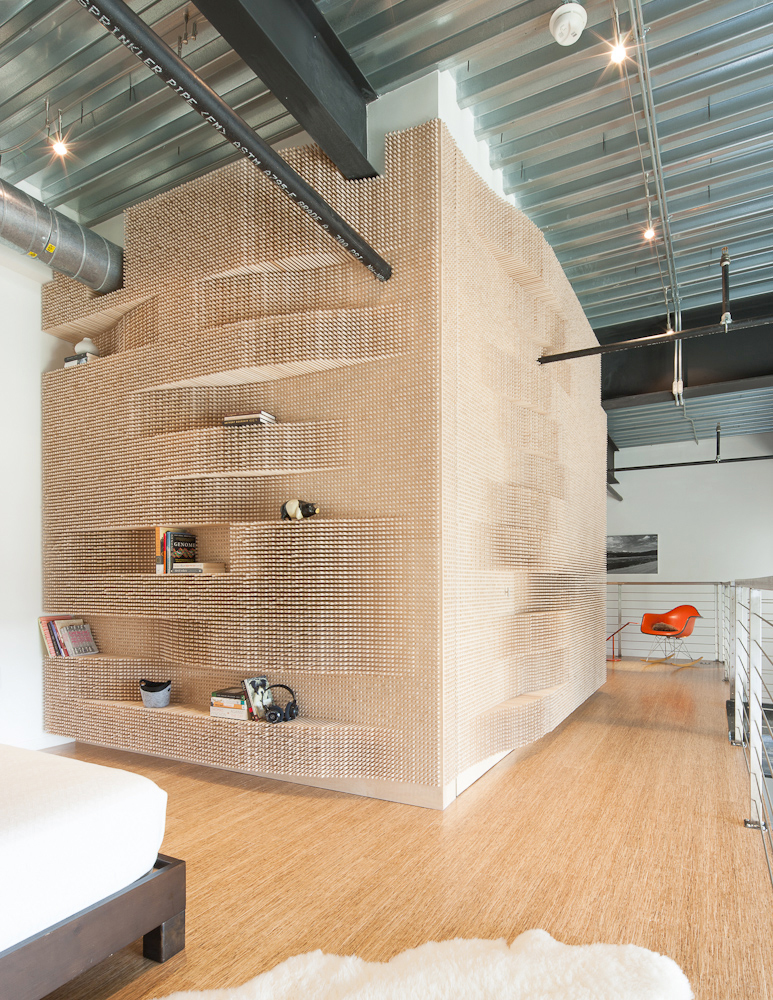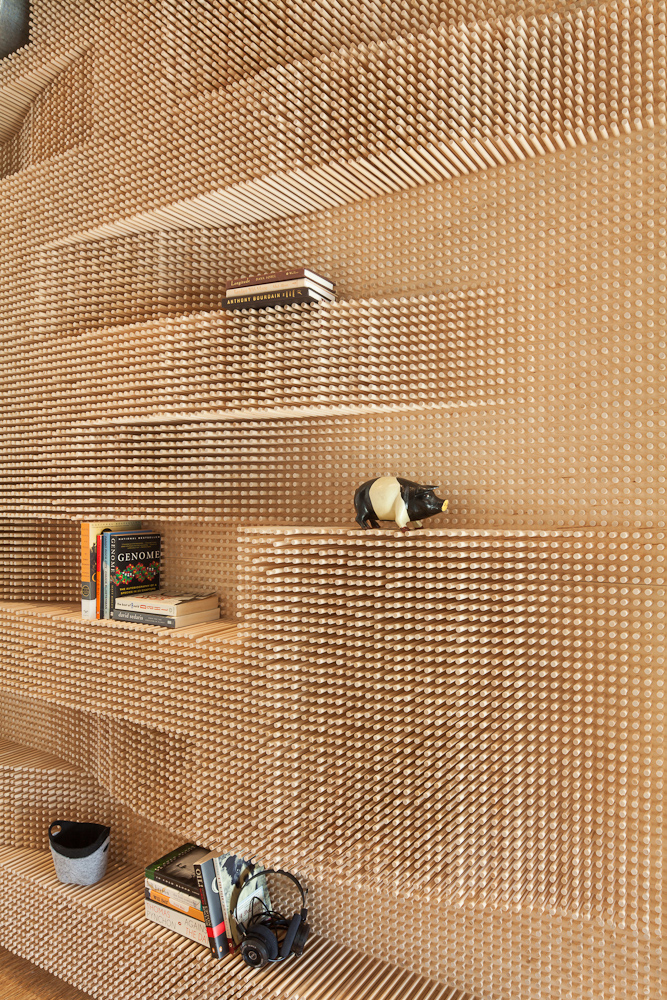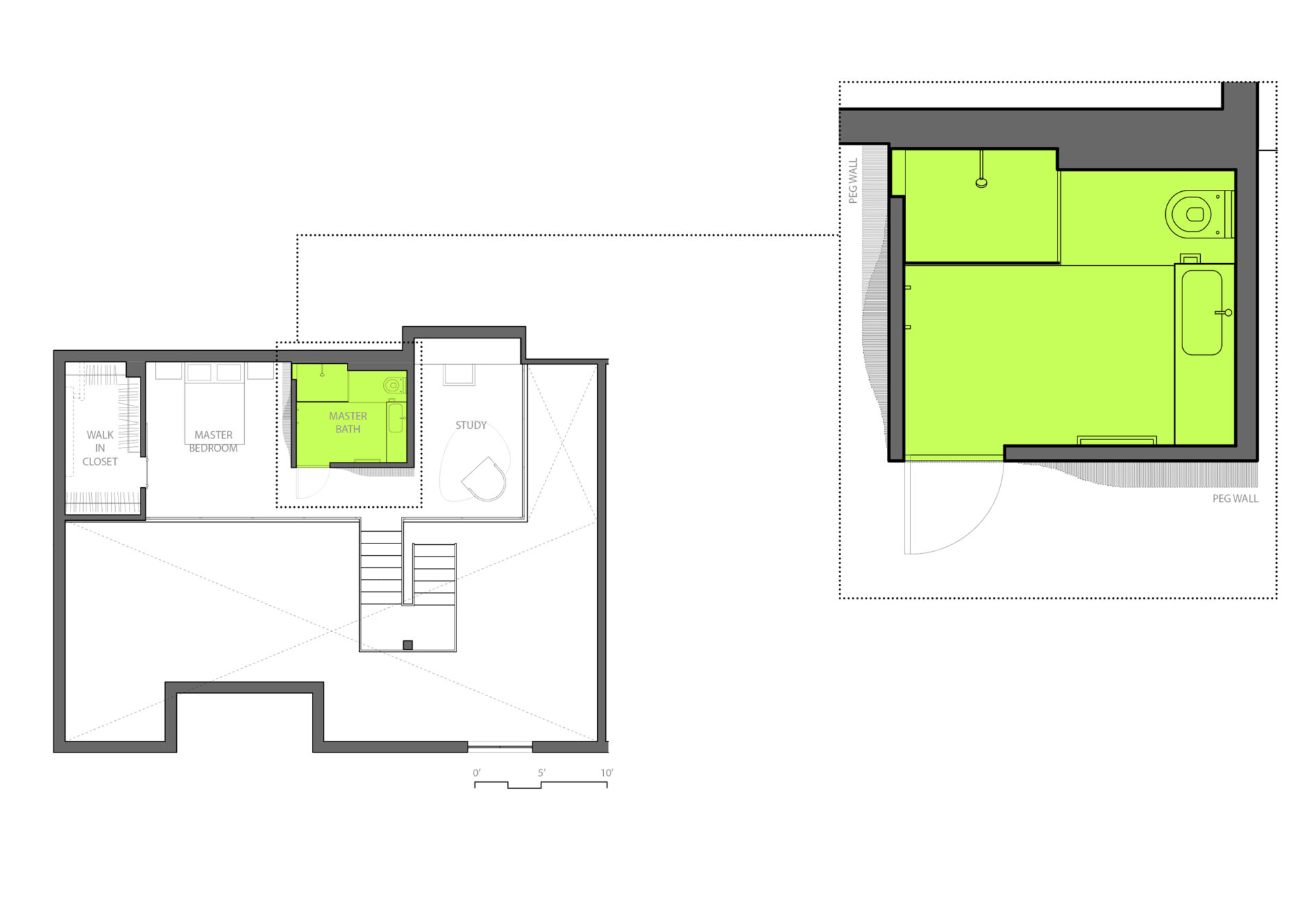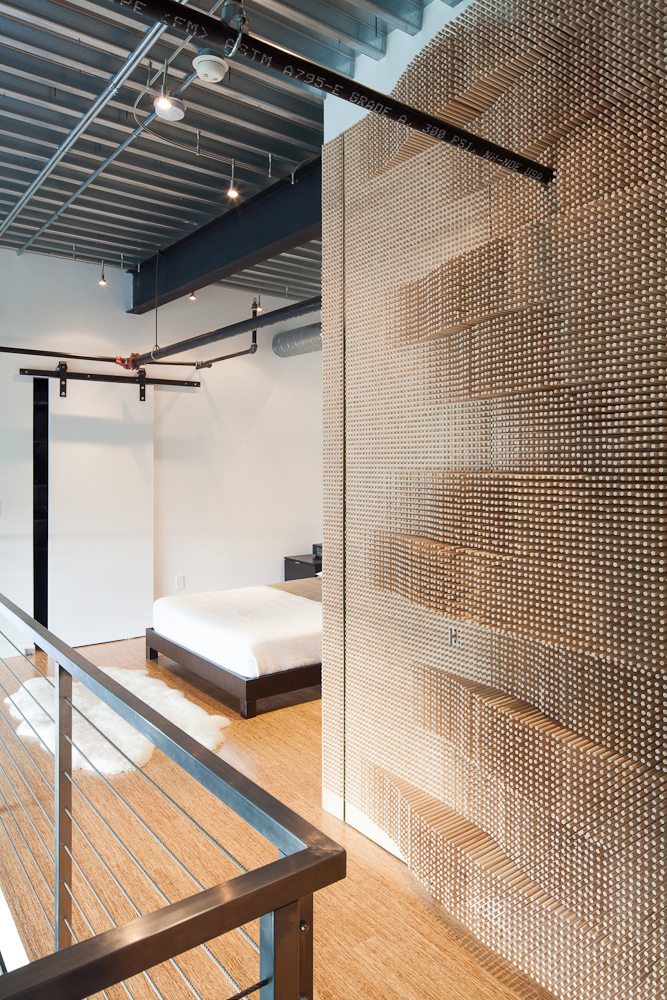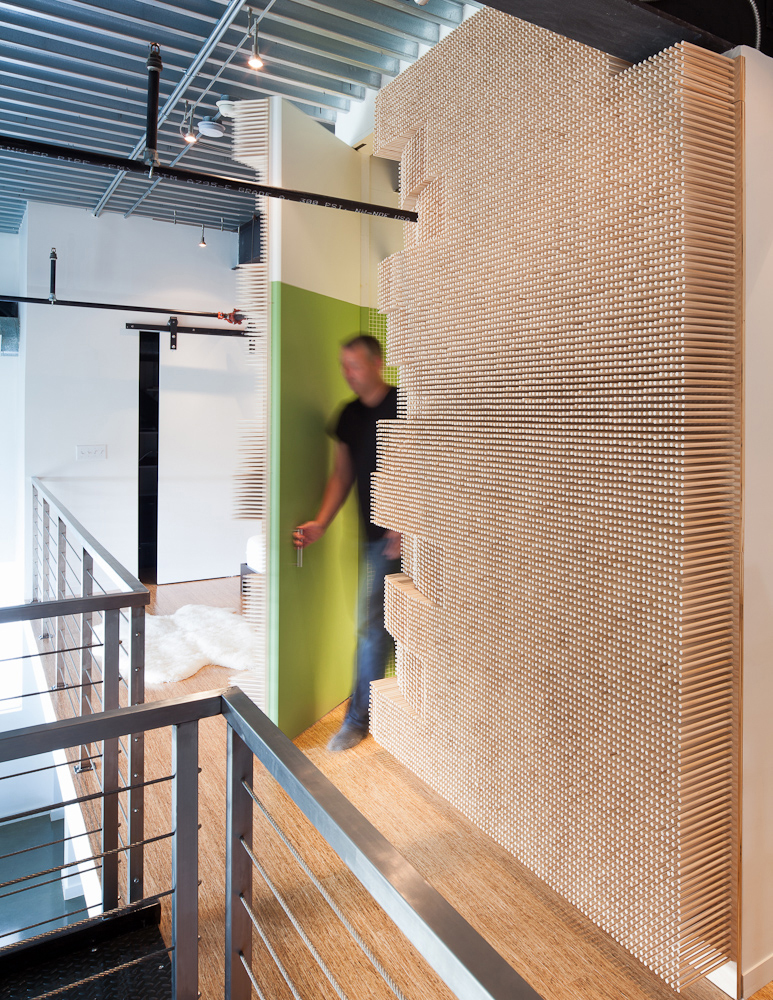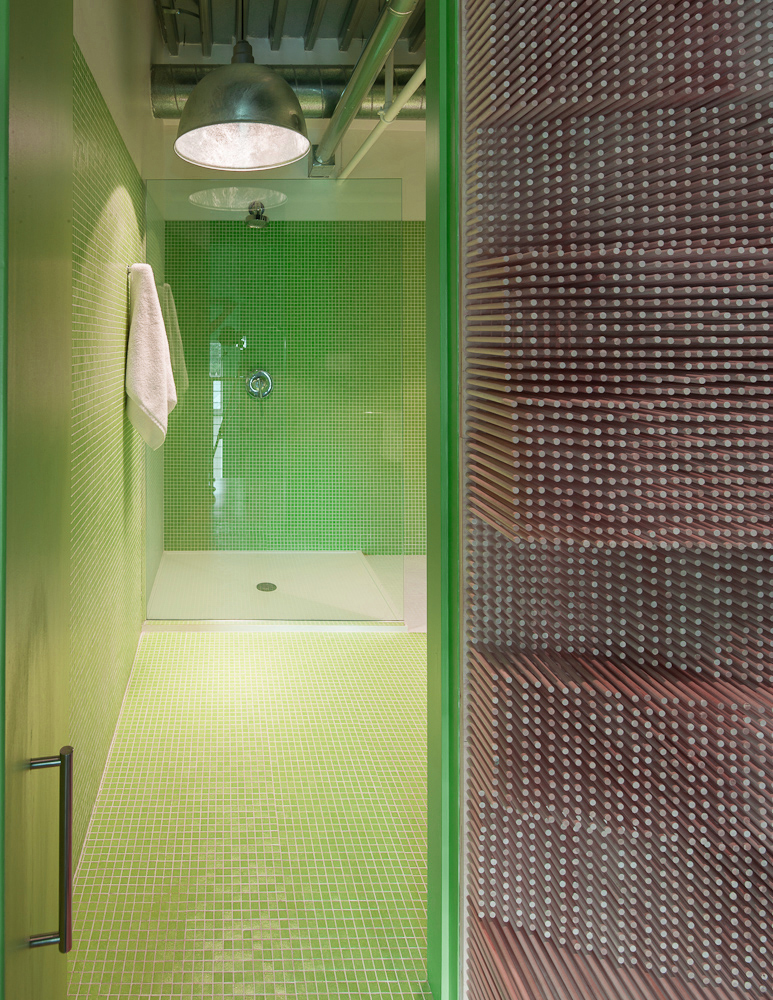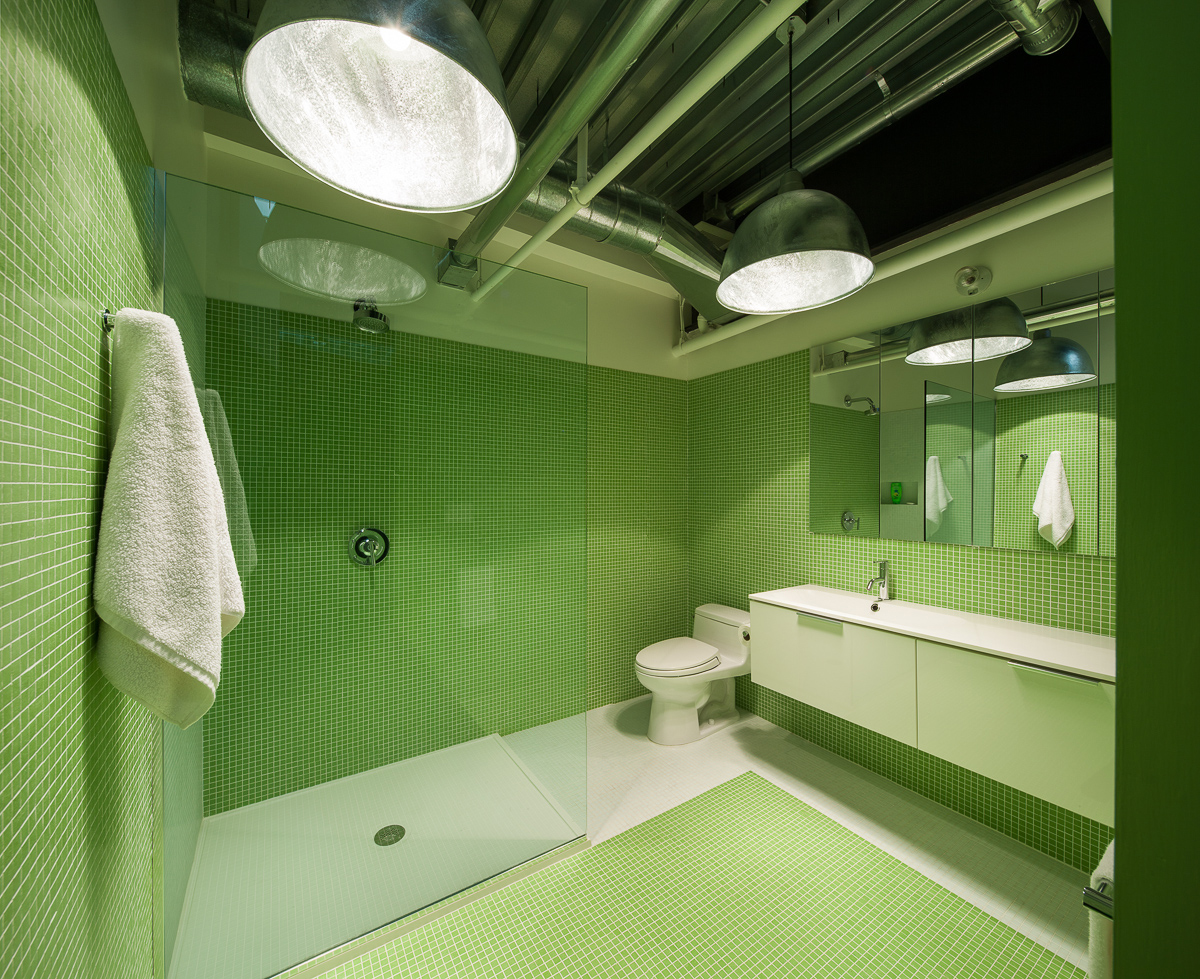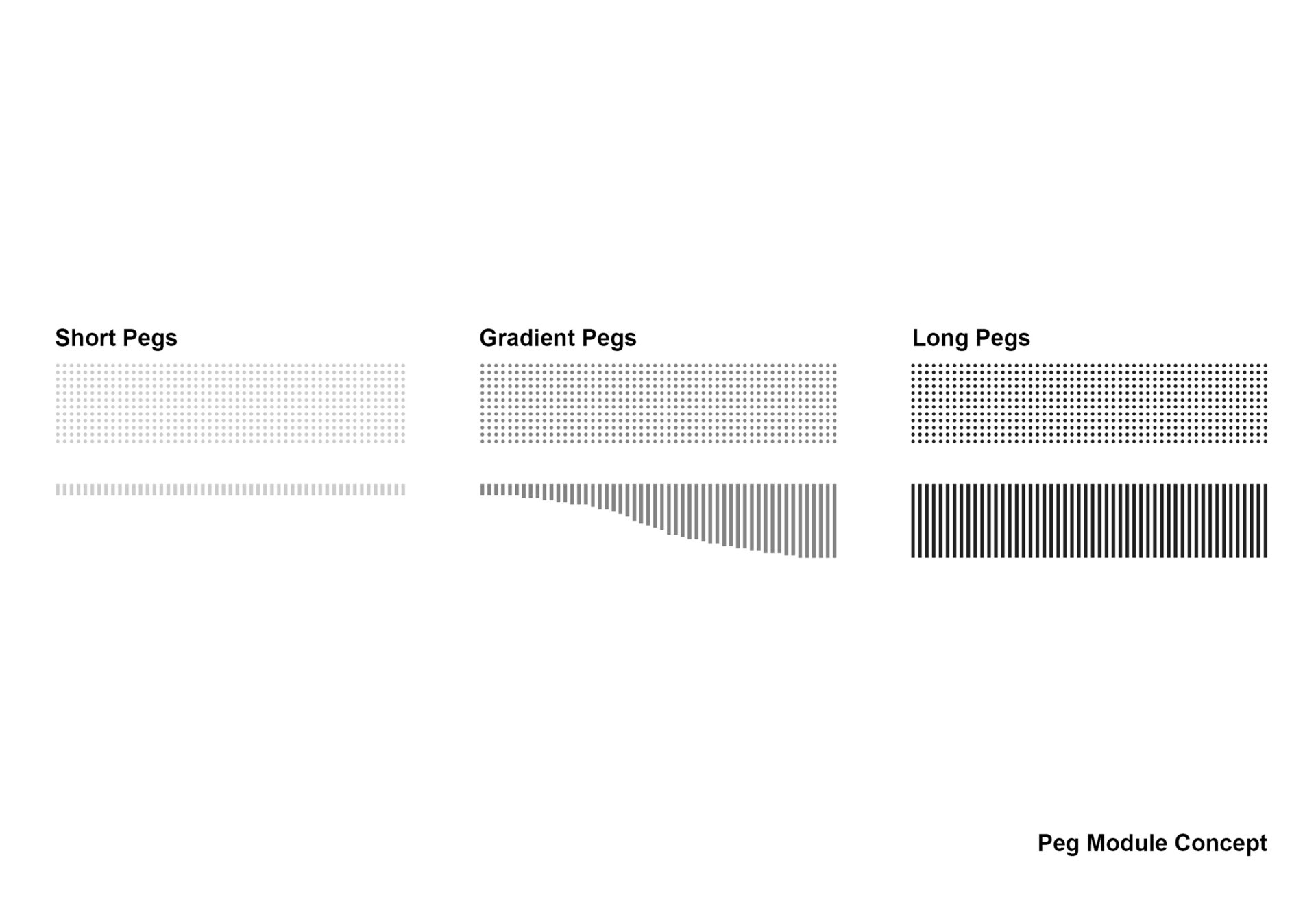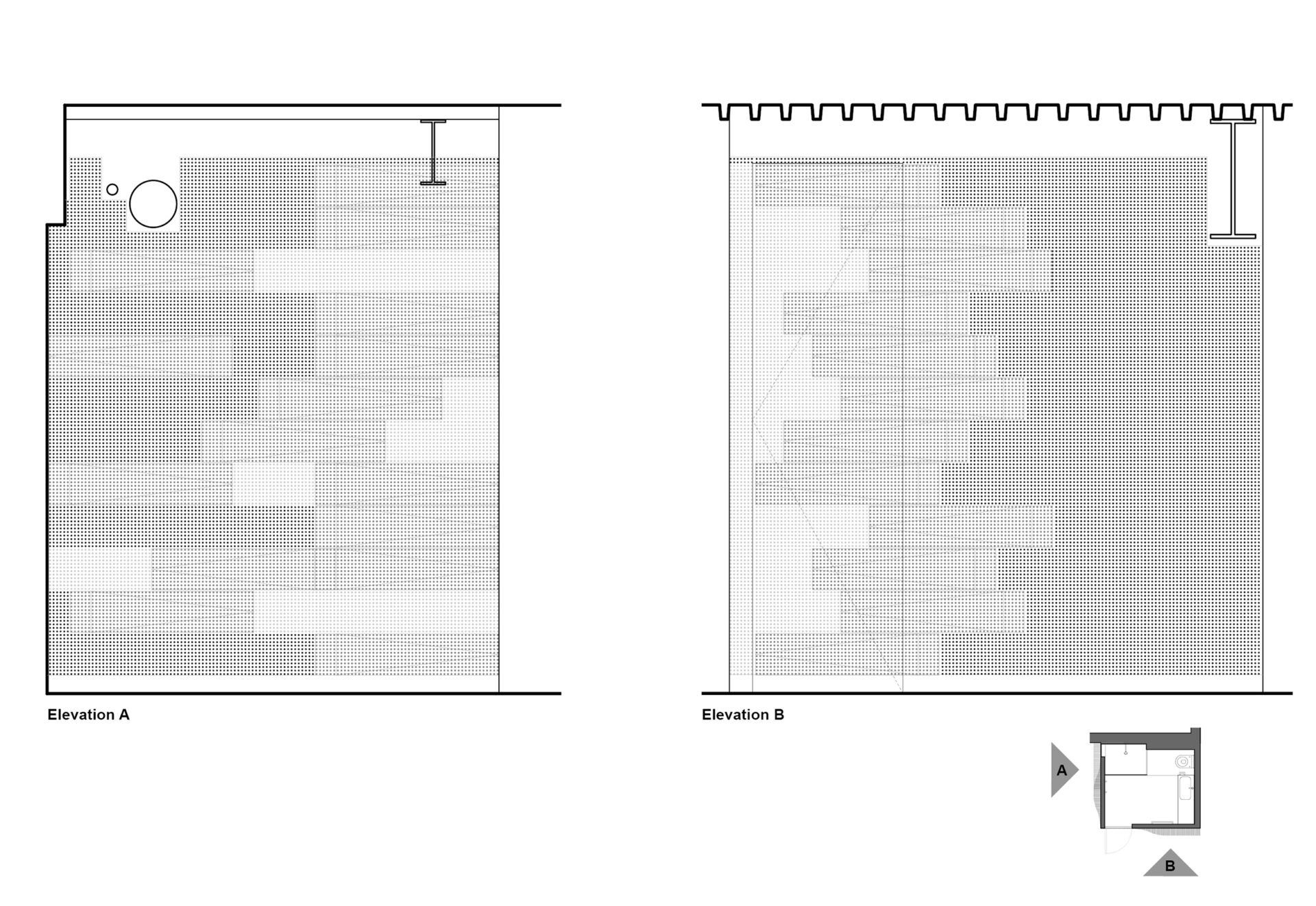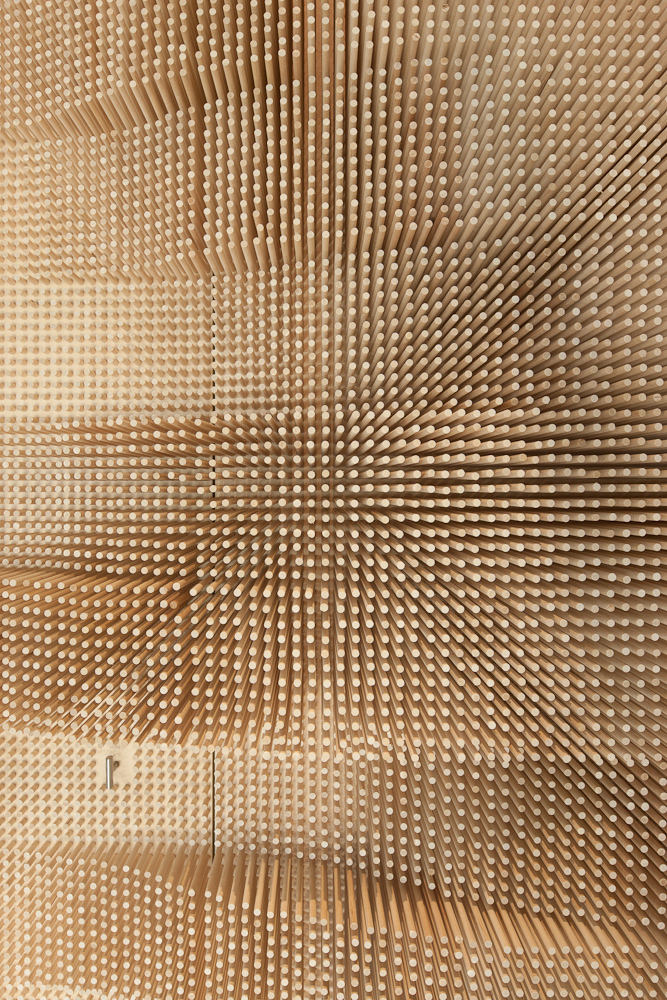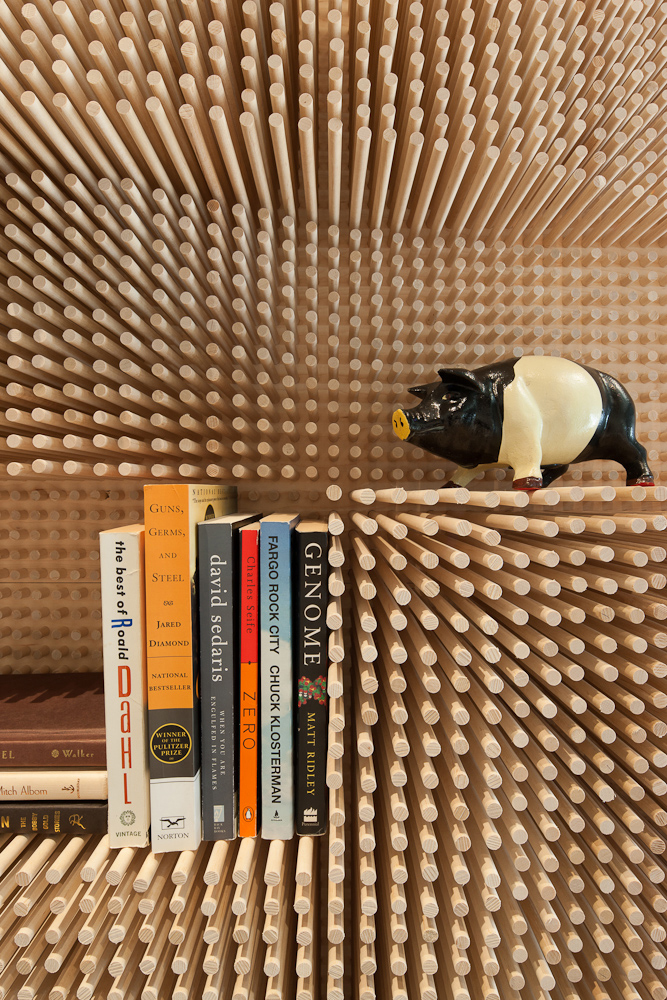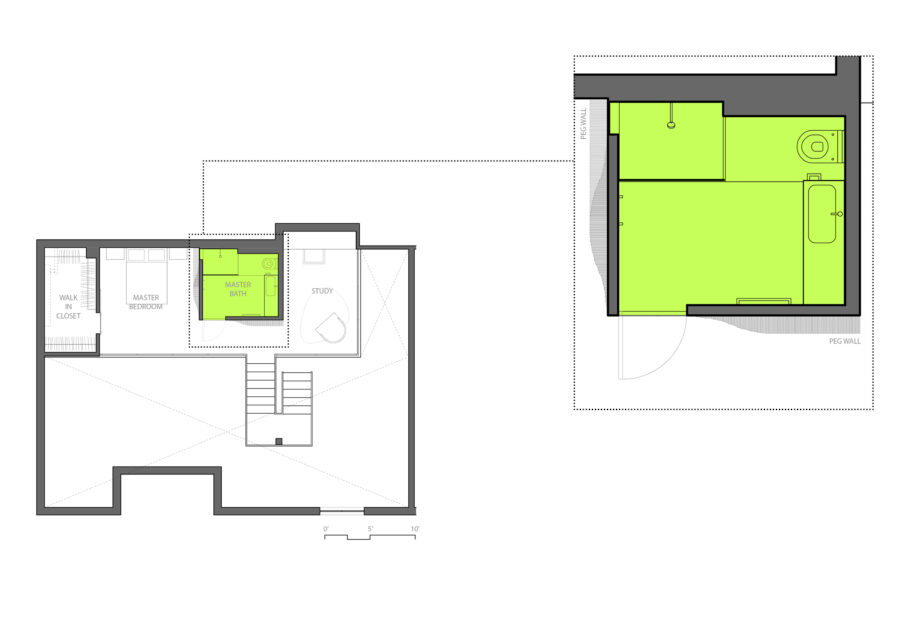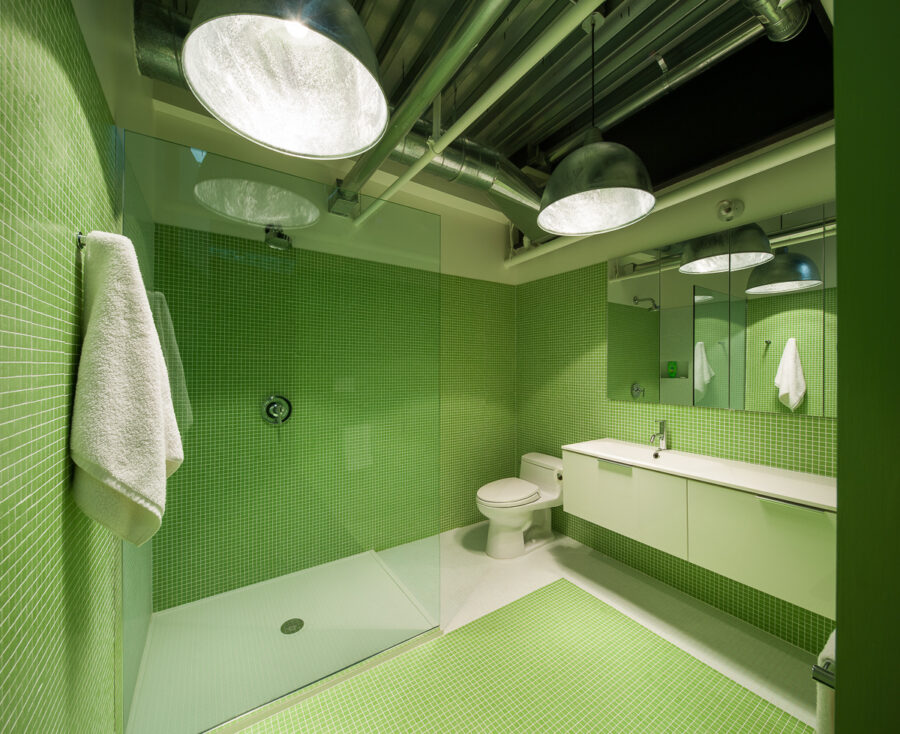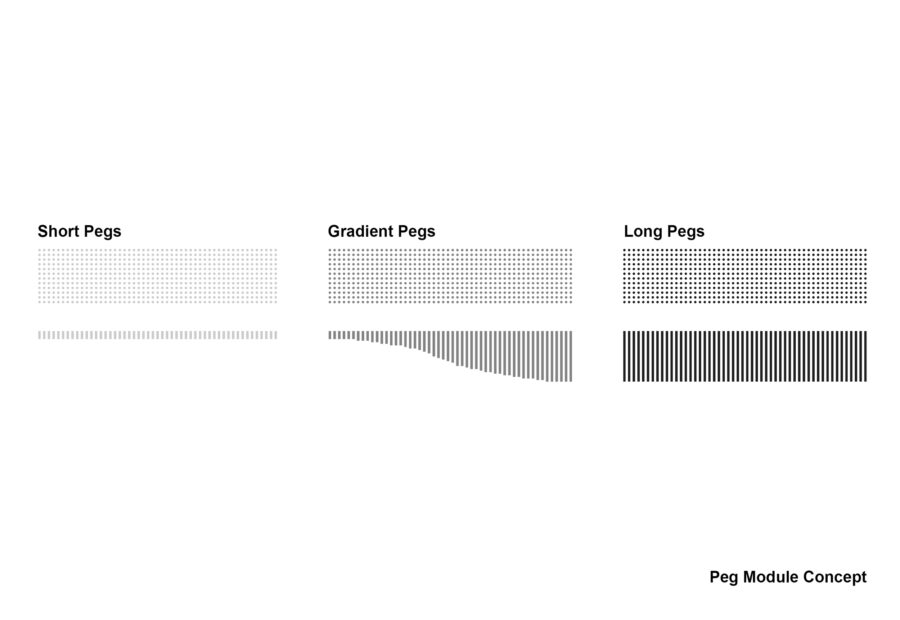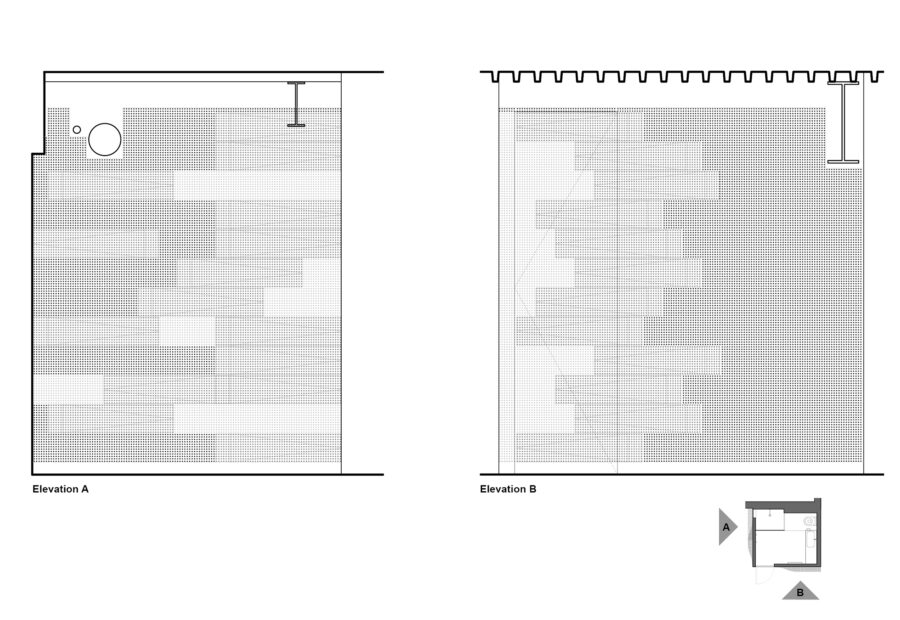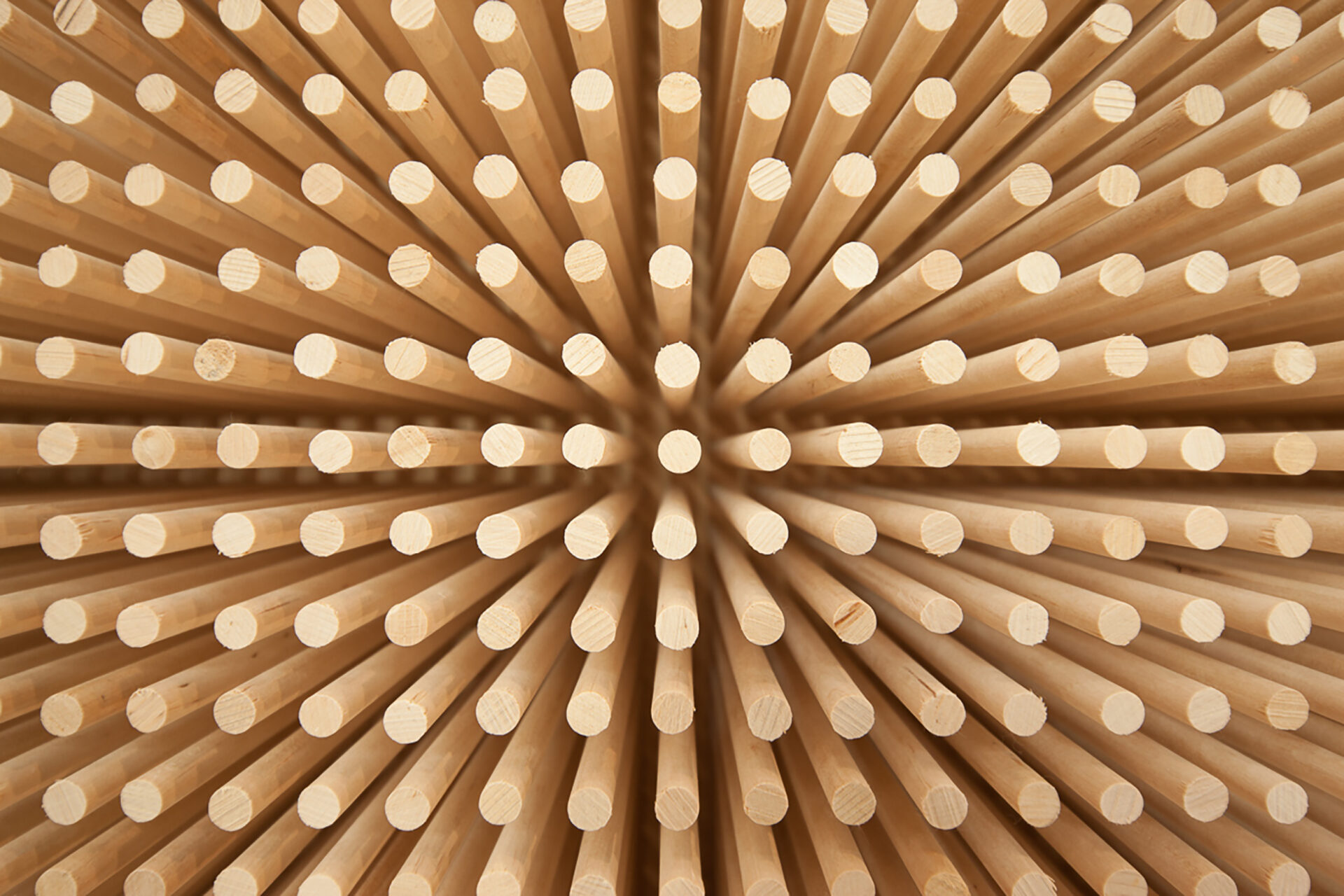The peg – a common connector of wood pieces or hanger of coats – takes on a new function in this installation between the scales of furniture and architecture.
An exercise in extreme aggregation, over 42,000 wood dowels of 30 different lengths are inserted into plywood panels CNC-cut with a grid of 1/2” diameter holes. In this way, the assembly unifies the handicraft tradition out of which the peg emerged with new methods of digital fabrication. The resultant surface undulates just as it oscillates between an ornamental wall texture and a fully-functional bookcase; between a grid of discrete points and a continuous surface. In this sense, it may be hard to peg down.
Beneath the courses of peg lies a surprise; a bathroom accessed through a hidden operable panel. The space is lined in bright green paint and tile to provide a contrast with the woody hued exterior. Tile units are just 1” square, echoing the pixelated appearance and aggregated approach of the exterior. From both within and without, then, surfaces suggest rich perceptual playtime for the eye.
